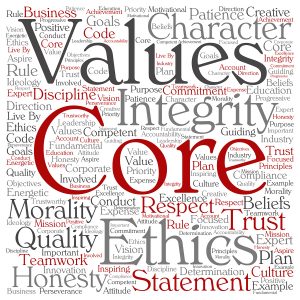The Number of Employee Engagement?
70
I seem to find that number a lot.
Preparing to write this, I do a Google Search for Employee Engagement and set search parameters to only list items posted in less than 24 hours. I get 70 results.
Employee Engagement is the new BLACK.
That’s why so many employee satisfaction surveys have been renamed to engagement surveys.
It’s why Engagement Software is becoming a new niche industry.
And then there is this. The other places where I see the number 70.
Survey Says
 A Gallup Survey shows that 70% of employees are disengaged or not fully engaged in the workplace.
A Gallup Survey shows that 70% of employees are disengaged or not fully engaged in the workplace.
Another study shows that 70% of customers leave because of poor customer experience. In other ways, they become disengaged.
In a large way, these were wake-up numbers for many. They may have looked at how they attempted to do more work with less people and found that actually they weren’t doing more with less. They were doing less. A Cornerstone study showed 68% less.
So the conclusion we can draw from all of this is that engagement is a critical factor. In fact, employee engagement has a direct relationship to customer engagement.
In fact, a 2016 study by the Temkin Group found that companies with a more engaged workforce scored significantly better on customer experience ratings than those with less engaged workforces. Customers with a great experience stay.
[tweetthis]Employee Engagement has a direct relationship to customer engagement. [/tweetthis]
More Than a Trend
So Employee Engagement is the new black. Or at the least the buzz phrase is.
Many organizations, however, don’t seem to really understand what engagement means. Let’s take a look at the data we shared above.
When we talk about customer engagement we also use the word “experience“. We worry about the customer experience because we know that a negative experience repels customers. Even one has a big impact. It’s recoverable, but only when we act to make it right.
We should also worry about the employee experience because it impacts THEIR engagement.
- When we add to their workload because we eliminated the positions that used to do that job, we create a negative experience.
- When we try to “keep them in their place”.
- When we seek to “fix them” as a manager once requested of me.
- When we create a culture that discourages independent thought, values youth over experience, values tenure over productivity, or values gender over contribution.
- Even when we value customers over employees we create the negative employee experience that leads to disengagement that leads to negative customer experiences.
We create great customer experiences, however, when we focus on creating great employee experiences. We do that by creating a culture that both equips and encourages our employees to insist on their best and do what it takes to provide the superior customer experience.
A key word there is EQUIP.
You can’t expect a carpenter to drive a nail without a hammer (or nail gun today). It would be unreasonable to expect a cook to make breakfast without food supplies and kitchen tools. You can’t expect anyone to provide a great experience without having the tools.
What are some of the tools we need to provide for a great experience, whether for an employee or a customer?
- Identified Core Values
Make it clear what we stand for and what is non-negotiable in everything we do. For employees it helps them understand the guidelines under which they are to operate and interact with customers. - Communicated Expectations
People work best when they know exactly what is expected of them. We establish that by constantly sharing our expectations in both our words and our actions, as well as letting them know what they can expect from us. - Personal Connection
People want to know that they personally matter. She’s not employee #100. She is Liza who makes a major contribution to our excellent customer service standards. He is not customer #347568. He is Charles who has done business with us for the last three years. - Appreciation
With that connection, they want to know that it makes a difference to you. Recognizing both informally and formally what someone does in the workplace on a daily basis shows appreciation for it. Reward what your desire. If you want consistent, above average performance, recognize it freely and frequently. If you want a customer to come back and buy again, show recognition for this visit. T-mobile thanks me for being a 15+ year customer every time I call them. It’s little yet goes a long way.




